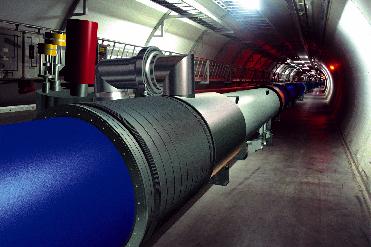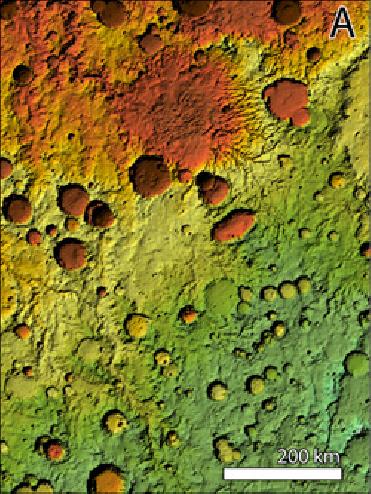
LONDON (BNS): The most ambitious scientific effort at understanding many mysteries of the universe, the Large Hadron Collider (LHC) was switched on at 9.30 am local time along the border between Switzerland and France today.
This scientific instrument, the largest and most complex in the world, is installed in a 27 km tunnel, 100 metres underground in the Swiss canton of Geneva and neighbouring France.
The first beam in the Large Hadron Collider at the CERN was successfully steered around the full 27 kilometres of the world’s most powerful particle accelerator.
This historic event marks a key moment in the transition from over two decades of preparation to a new era of scientific discovery.
Experiments at the LHC expect to be able to answer a number of fundamental questions, such as the origin of mass or the nature of the so-called “dark matter”.
“It’s a fantastic moment,” said LHC project leader Lyn Evans, “we can now look forward to a new era of understanding about the origins and evolution of the universe.”
Starting up a major new particle accelerator takes much more than flipping a switch. Thousands of individual elements have to work in harmony, timings have to be synchronized to under a billionth of a second, and beams finer than a human hair have to be brought into head-on collision. Today’s success puts a tick next to the first of those steps, and over the next few weeks, as the LHC’s operators gain experience and confidence with the new machine, the machine’s acceleration systems will be brought into play, and the beams will be brought into collision to allow the research programme to begin.
Once colliding beams have been established, there will be a period of measurement and calibration for the LHC’s four major experiments, and new results could start to appear in around a year. Experiments at the LHC will allow physicists to complete a journey that started with Newton's description of gravity. Gravity acts on mass, but so far science is unable to explain the mechanism that generates mass.
Experiments at the LHC will provide the answer. LHC experiments will also try to probe the mysterious dark matter of the universe – visible matter seems to account for just 5% of what must exist, while about a quarter is believed to be dark matter. They will investigate the reason for nature's preference for matter over antimatter, and they will probe matter, as it existed at the very beginning of time.
A central theme apart from the LHC, its magnets and experiments, will be superconductivity, the principle on which the operation of the LHC is based. At the heart of the LHC magnets lie 7000 kilometres of superconducting cables, cooled to a temperature close to absolute zero, which are able to conduct electricity without resistance.
“The LHC is a discovery machine,” said CERN Director General Robert Aymar, “its research programme has the potential to change our view of the Universe profoundly, continuing a tradition of human curiosity that’s as old as mankind itself.”
Different laboratories around the world have contributed to this success.
“The completion of the LHC marks the start of a revolution in particle physics,” said Pier Oddone, Director of the US Fermilab. “We commend CERN and its member countries for creating the foundation for many nations to come together in this magnificent enterprise. We appreciate the support that DOE and NSF have provided throughout the LHC's construction. We in the US are proud to have contributed to the accelerator and detectors at the LHC, together with thousands of colleagues around the world with whom we share this quest.”
“I congratulate you on the start-up of the Large Hadron Collider,” said Atsuto Suzuki, Director of Japan’s KEK laboratory, “This is a historical moment.”
“It has been a fascinating and rewarding experience for us,” said Vinod C Sahni, Director of India’s Raja Ramanna Centre for Advanced Technology, “I extend our best wishes to CERN for a productive run with the LHC machine in the years to come.”
“As some might say: ‘One short trip for a proton, but one giant leap for mankind!’ TRIUMF, and indeed all of Canada, is delighted to bear witness to this amazing feat,” said Nigel S Lockyer, Director of Canada’s TRIUMF laboratory. “Everyone has been involved but CERN is to be especially congratulated for bringing the world together to embark on such an incredible adventure.”
In a visit to CERN shortly before the LHC’s start-up United Nations Secretary General, Ban Ki-moon said, “I am very honored to visit CERN, an invaluable scientific institution and a shining example what international community can achieve through joint efforts and contribution. I convey my deepest admiration to all the scientists and wish them all the success for their research for peaceful development of scientific progress.”
CERN, the European Organization for Nuclear Research, is the world's leading laboratory for particle physics. It has its headquarters in Geneva. At present, its member states are Austria, Belgium, Bulgaria, the Czech Republic, Denmark, Finland, France, Germany, Greece, Hungary, Italy, Netherlands, Norway, Poland, Portugal, Slovakia, Spain, Sweden, Switzerland and the United Kingdom. India, Israel, Japan, the Russian Federation, the United States of America, Turkey, the European Commission and UNESCO have observer status.
 Previous Article
Previous Article













The Indian Air Force, in its flight trials evaluation report submitted before the Defence Ministry l..
view articleAn insight into the Medium Multi-Role Combat Aircraft competition...
view articleSky enthusiasts can now spot the International Space Station (ISS) commanded by Indian-American astr..
view article